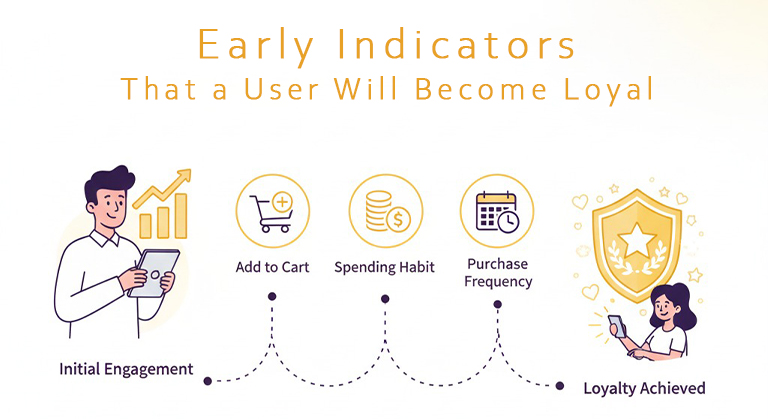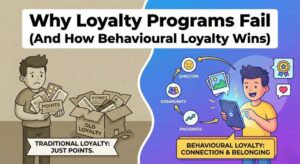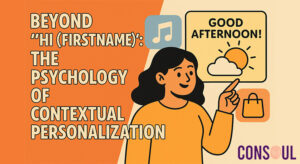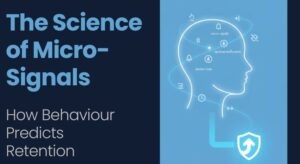The behaviors that predict long-term value — and how to double down on them
In today’s crowded marketplaces, acquiring a user is just the start. True business growth depends on converting that acquisition into long-term loyalty — repeat usage, advocacy, and increased customer lifetime value (CLV). But loyalty doesn’t just emerge over time. In fact, it’s often predictable based on early behaviors users exhibit soon after first contact.
Understanding these signals is critical. If you can identify loyalists early, you can invest in nurturing them, improving retention, revenue, and marketing efficiency.
So what early behaviors predict loyalty — and how can brands act on them? Let’s break it down.

First-time behaviors that predict loyalty
Some users show signs from the very first interactions that they’re likely to stay. These signals often occur within the first few days or weeks, and their presence strongly correlates with retention.
Key early indicators include:
- Repeat visits in a short time frame: A user who returns to your site or app within 48 hours of their first visit shows active interest.
- Account creation or profile completion: Voluntarily setting up an account or adding personal details suggests a level of commitment.
- Interaction with onboarding flows: Completing tutorials, FAQs, or setup guides signals that the user is willing to invest time to “get value” from your product.
The earlier these behaviors occur, the stronger their predictive value. These users are already demonstrating curiosity and intent.
Engagement depth vs. frequency: which matters more?
Not all engagement is created equal. For instance, a user might visit your website five times but merely browse the homepage each time — versus another user who visits twice but explores multiple categories, adds items to a wishlist, or reads detailed product descriptions.
Depth of engagement often predicts loyalty better than pure frequency. Look for behaviors like:
- Saving products or content for later
- Leaving reviews or feedback
- Exploring your loyalty or referral program details
These actions show not just interest, but a willingness to form a relationship with your brand — an early loyalty marker.
Early signs of emotional investment
Loyalty isn’t purely transactional. It often begins when users feel emotionally connected to your brand or offering.
Indicators of emotional investment include:
- Following your brand on social media early in their journey
- Sharing content or tagging your brand
- Voluntarily signing up for notifications or newsletters, even before purchase
These behaviors signal that the user is open to a longer relationship. They’re not just shopping — they’re joining your ecosystem.
Multi-channel participation as a loyalty signal
Today’s best customers rarely interact on a single channel. Multi-channel behavior is a strong early indicator of future loyalty.
Examples include users who:
- Visit your website and download your app
- Engage with both email and WhatsApp messages
- Use mobile, desktop, and in-store channels interchangeably
Cross-channel engagement suggests a user is investing time in your ecosystem, increasing their stickiness. These users are worth nurturing with tailored experiences and rewards.
First purchase characteristics that predict CLV
If your business revolves around transactions (eCommerce, retail, fintech), the nature of a user’s first purchase can reveal much about their future value.
Key predictors:
- Average order value (AOV): Customers with higher AOV on their first purchase often have higher lifetime value.
- Product category: Certain products attract more loyal customers; for example, essentials and replenishable goods often lead to repeat purchases.
- Payment method: Customers who choose subscription or auto-renewal at the outset are strong candidates for loyalty.
By monitoring these factors, brands can identify which users to prioritize for further nurturing.
How to double down on early loyalty signals
Detecting these signals is only part of the equation. The real opportunity is knowing how to act quickly when early loyalty indicators appear.
Practical next steps include:
- Personalized journeys: Tailor communications immediately for high-potential users. For instance, users who show multi-channel behavior can receive cross-device reminders or suggestions.
- Exclusive offers or loyalty nudges: Encourage second purchases quickly with limited-time rewards or membership program invitations.
- Reduce friction: Make it easy for these users to engage further — fast checkout, saved preferences, one-click reorders.
- Accelerate trust-building: For financial services, this could mean pre-filling forms, easing KYC processes, or fast-tracking onboarding for promising segments.
Brands that move quickly can translate these early behaviors into deeper, longer-term relationships.
Common false positives to avoid
It’s equally important to recognize behaviors that might look like loyalty indicators but often aren’t.
For example:
- Contest participation: Engagement driven purely by incentives may not translate into genuine interest or retention.
- High-velocity browsing: Users who browse extensively but without focus may not convert into buyers or subscribers.
Effective MarTech strategy requires separating real loyalty signals from noise, so resources are invested wisely.
The role of MarTech in operationalizing early loyalty detection
Modern marketing technology platforms can help brands detect, score, and act on these early indicators at scale:
- CRM platforms can segment high-potential users automatically
- Customer journey tools can trigger timely nudges
- Analytics platforms can identify patterns in behavior tied to long-term value
But platforms alone aren’t enough. The key is a smart strategy that knows what to look for and how to respond fast.
Closing thought: Loyalty starts early
Many brands think loyalty is something that develops over years.
In reality, loyalty starts early — often in the first hours or days of a user’s journey.
At ConSoul, we help brands unlock these insights and build lifecycle journeys that move users from interest to advocacy efficiently and sustainably.
Want to learn what signals predict loyalty in your user base? Let’s talk.



